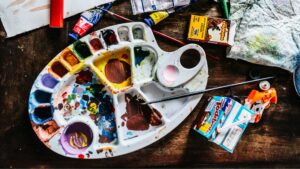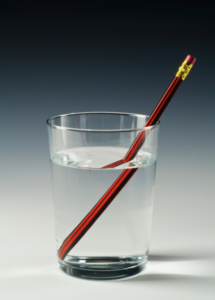15 mistakes in your IB Art Comparative Study, “it sounds like a lot”, I hear you say.
But, as IB teachers and examiners, many of these mistakes are seen time and time again. So, don’t be one of the students who lose valuable points by ignoring this advice.
While, it is a long list of mistakes, making sure that you don’t fall into these traps will go a long way toward improving your IB Arts Comparative Study score.
As your IB Art Comparative Study is a key part of the IB course and externally examined by the IB, you need to nail it. This article will help you do just that. Also, we have IB teachers and examiners who can give you help and tuition offering you support along the way.
Plus, it is worth a whole 20% of your final IB score. so, it really is worth checking through this list as you start working on your comparative study.
It requires students to compare and contrast at least three works by two (or more) artists, movements, or cultures. Unfortunately, not every student is able to produce work worthy of maximum marks, and often it is because they fall into one of the traps below.
In this post, we are going to list some of the most common mistakes to avoid when writing your Comparative Study.
1. Lack of Research
Do not underestimate the amount of time you need for research. As you will need to do a considerable amount ideally with both primary as well as secondary sources. You can‘t rely solely on your own opinion. Instead, it’s best to gather information from a wide range of sources to support your analysis.
Use your holidays to do primary research. Your family may even appreciate tagging along to museums, art galleries, and artist studios. This will make sure you have plenty of time to enrich your research.
Hours trawling the internet is NOT research! Start honing your skills early. This means making friends with your librarian. Yes, libraries are still relevant in our digital age. They may have expensive art books and periodicals available.
You might be surprised to hear that most school librarians will also be happy to look at your research, challenge it and give you tips on how to find even more credible sources.
2. Failing to clearly articulate the focus of the study
One of the most common Visual Arts Comparative Study mistakes is the lack of a clear focus. The emphasis should be placed on a specific issue or theme. Then the introduction needs to explain it and ideally explain why you chose the works of art you have selected.
3. Weak Analysis
An effective Comparative Study must provide a detailed analysis of the works of art you’ve chosen. The main things to consider are the formal qualities, cultural context, and techniques used by the artists. When it comes to formal elements, you need to delve into composition, colour, and line, as well as the meaning and symbolism of the works.

4. Not providing enough context
Not providing enough context for artwork analysis is another widespread mistake. It is imperative to describe the historical, cultural, and artistic context for each piece of art in question. This is important in order to demonstrate the appreciation and understanding of the significance of the chosen artworks.
5. Not taking enough time
Most schools aim for you to complete the IB Art Comparative Study in the IB1 year. Or, at the very latest a few months into the IB2 year. This is so you can spend plenty of time on the research without running into all the other deadlines for the IB Core and the rest of your subjects.
So stick to these timings!
Don’t push for deadline extensions, however tempting it might be.
Put the work in early and you can have this important piece of work out of the way, with good scores in the bag before the final year of the IB adds even more stress and work!
6. Using secondary sources only
During the pandemic, students were not marked down for not seeing at least one of the works firsthand if you can. Now the pandemic is behind us, students really need to visit one artwork.
Your teachers and examiners WANT you to see art firsthand.
If this is not possible for some reason, then there are some amazing virtual tours on offer. This is just one from the British Museum Museum of the World.
7. Not making the best use of the one round of teacher feedback
Students have one round of written/oral feedback from their class teacher. We have seen how this is wasted by many students. Particularly when a student hands in work that is not developed enough they lose the chance for useful and relevant feedback.
Instead, you should try to push yourself as far as possible and make the work the best it can be before you hand it in for the final teacher feedback.
8. Focusing too much on the artists
While it is necessary to provide background information on the artists, do not concentrate too much on their biographical details. Instead, the focus should be on the artworks themselves.
This sounds obvious, but we see too many Comparative Studies where too much valuable space is given over to artists’ biographical information.
9. Not choosing works that really interest you
As teachers and examiners, we can really see when a student is passionately engaged in the study. Rather than just going through a box-ticking exercise.
Dig deep, think about what really matters to you, then choose your artworks.
10. Inappropriate use of terminologies
One of the marks of a high-quality IB Visual Arts comparative study is the use of appropriate terminology. It will come in handy to describe the formal qualities of the artworks.
Misusing technical terms or using them incorrectly can result in a loss of marks, and is easy to avoid with care and attention.
11. Limited use of visuals
In its nature, a comparative study is a visual presentation. Hence, you should make effective use of images to support your analysis. Make sure to include high-quality visuals that are relevant to the investigation.
The comparative study should be visually arresting and interesting, but at the same time clear and easy to read. You don’t want an examiner marking you down as they are yawning their way through it, or because they cannot understand your analysis.
This means it could include photos, sketches, text, journal pages, handwriting, and use your imagination!
12. Failing to choose artworks with enough differences
Some students fall into the trap of selecting works without enough differences to lend themselves to strong comparative analysis. This means ensuring they are different enough to warrant this kind of study.
Ensure there are cultural differences by selecting works created in different countries. Also, they can be temporally different, by selecting artworks from different eras.
13. Inadequate Referencing
Proper referencing of all the sources used in the Comparative Study is a must. Again, your school librarian will be able to give you extra help here if needed.
As you should know by now, plagiarism can lead to a loss of marks or even disqualification from the exam.
Keep track of your sources as you go! If you think you will find them all again at the end, you are in for an unpleasant surprise. So use a referencing app to help like easybib.com.
14 Not adhering to formal requirements
The core of the comparative study is 10-15 screens (plus 3-5 more for HL students) that examine the chosen works. Going over (or under) these limits will result in a mark deduction. Note: The bibliography is not counted as part of the limit.
15. Lack of Structure
The Comparative Study should have a clear structure that reflects the key questions being addressed. Students should use headings, subheadings, and bullet points to make their work more readable and organized. Make sure to check out previous high-scoring examples of the IB Arts Comparative Study to learn more about the proper structure.
That’s because they fail to follow the guide, or they let omissions or errors creep into their investigation.
Need Help With Your Visual Arts Comparative Study
IB Visual Arts comparative study is a creative task that requires not only a good eye for art but also extensive analytical skills. You will have to try on the role of a critic and demonstrate your understanding of art. It’s not always easy. But don’t worry, it’s not that bad if you can enlist the help of someone more experienced such as one of our IB Visual Arts tutors.
TutorsPlus has been around for almost 17 years to provide the support and advice you need to excel. So, if your goal is a praise-worthy comparative study, don’t hesitate to contact us. We are available at info@tutorsplus.com and 022 731 8148.










